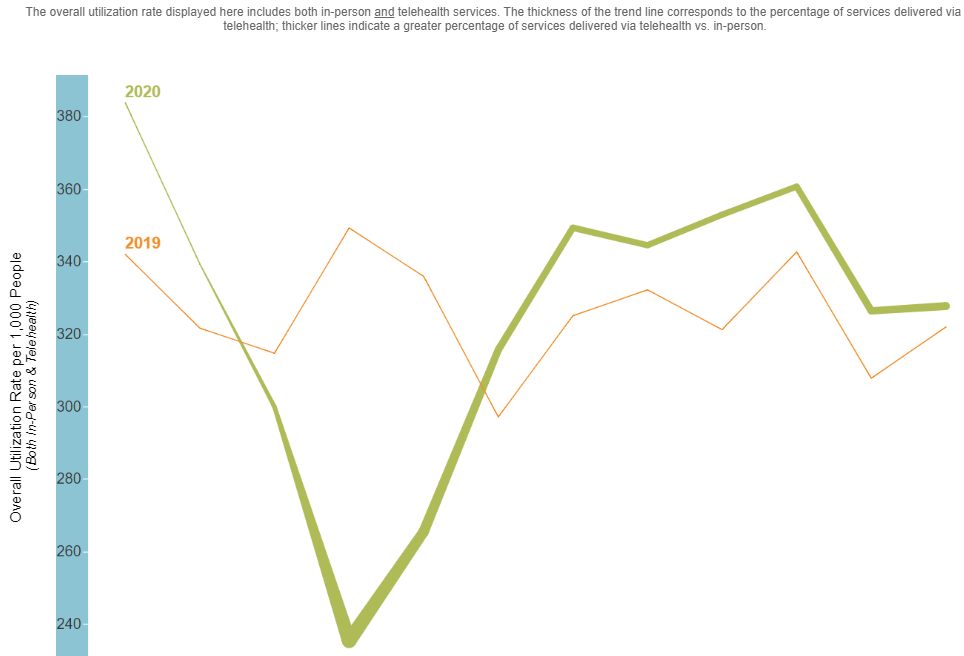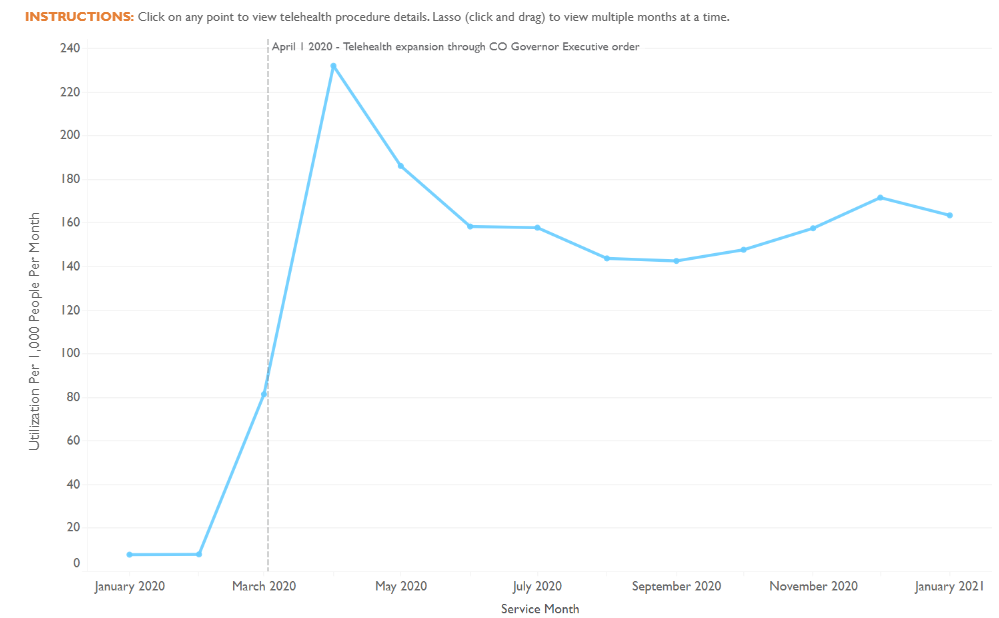Half of all visits in Colorado in 2020 were for mental health conditions
The Center for Improving Value in Health Care (CIVHC) released a new analysis, Telehealth vs. In-Person Utilization, using data from the Colorado All Payer Claims Database (CO APCD). The analysis compares utilization and payments for high-volume telehealth-eligible services, and whether the services were accessed via telehealth or in-person between January 2019 and December 2020. The data shows that even with the increased use of telehealth, utilization overall for eligible services dipped at the onset of the pandemic but rose to close to pre-pandemic levels later in the year. CIVHC concurrently released its fourth update to the Telehealth Services Analysis which shows that Coloradans continue to access telehealth most frequently for mental health conditions.
The Telehealth vs. In-Person Utilization report finds that even with the rapid adoption of telehealth in March of 2020, overall utilization for telehealth-eligible services did not return to pre-pandemic levels until later in the year.
Additional insights include:
- In April 2020, half of all eligible visits were performed via telehealth. Since then, telehealth visits have leveled off to around 20-25% of all eligible visits.
- Visits with behavioral health providers remained high throughout 2020, with over half of all visits being delivered by behavioral health providers since April 2020.
- Total utilization of high volume, telehealth-eligible services in 2019 were 322 services/1,000 people, compared to 319 services/1,000 people in 2020, a drop of 1% in service use overall.
- In April 2020 utilization of these services were 235 services/1,000 people compared to 349 services/1,000 people in 2019, a decrease of 33%
- By December 2020, utilization of these services were 328 services/1,000 people compared to 322 services/1,000 in 2019, an increase of 2%

Initial increases in the use of telehealth services in March and April 2020 were driven in part by a telehealth expansion executive order, which loosened statutory restrictions enabling more telehealth services and payments, and by the cessation of elective services executive order. Both executive orders aimed at slowing the spread of the virus. Declines in telehealth were anticipated after the cessation order was lifted at the end of April. The telehealth services analysis, now including data from January 2020 to January 2021, encompassing a full year of the pandemic, shows that while telehealth services did decrease through July, there was an uptick from September to January 2021 and use remains significantly higher than pre-pandemic levels.

As in previous updates, mental health conditions remain the most frequent diagnosis for telehealth services, increasing from approximately 35% in 2019 to a little over 50% of all visits in 2020. Psychiatric services and procedures (31%) replaced patient office visits (30%) as the most common service offered during the COVID pandemic.
CIVHC plans to continue updating both analyses to better understand how telehealth use and overall utilization trends continue to evolve across the state.
- View the interactive Telehealth vs. In-Person Utilization report
- View the update to the interactive Telehealth Services Analysis
- View the accompanying Telehealth Services Analysis infographic
- Access the downloadable Telehealth Services Analysis dataset
Contact us at info@civhc.org for more information.